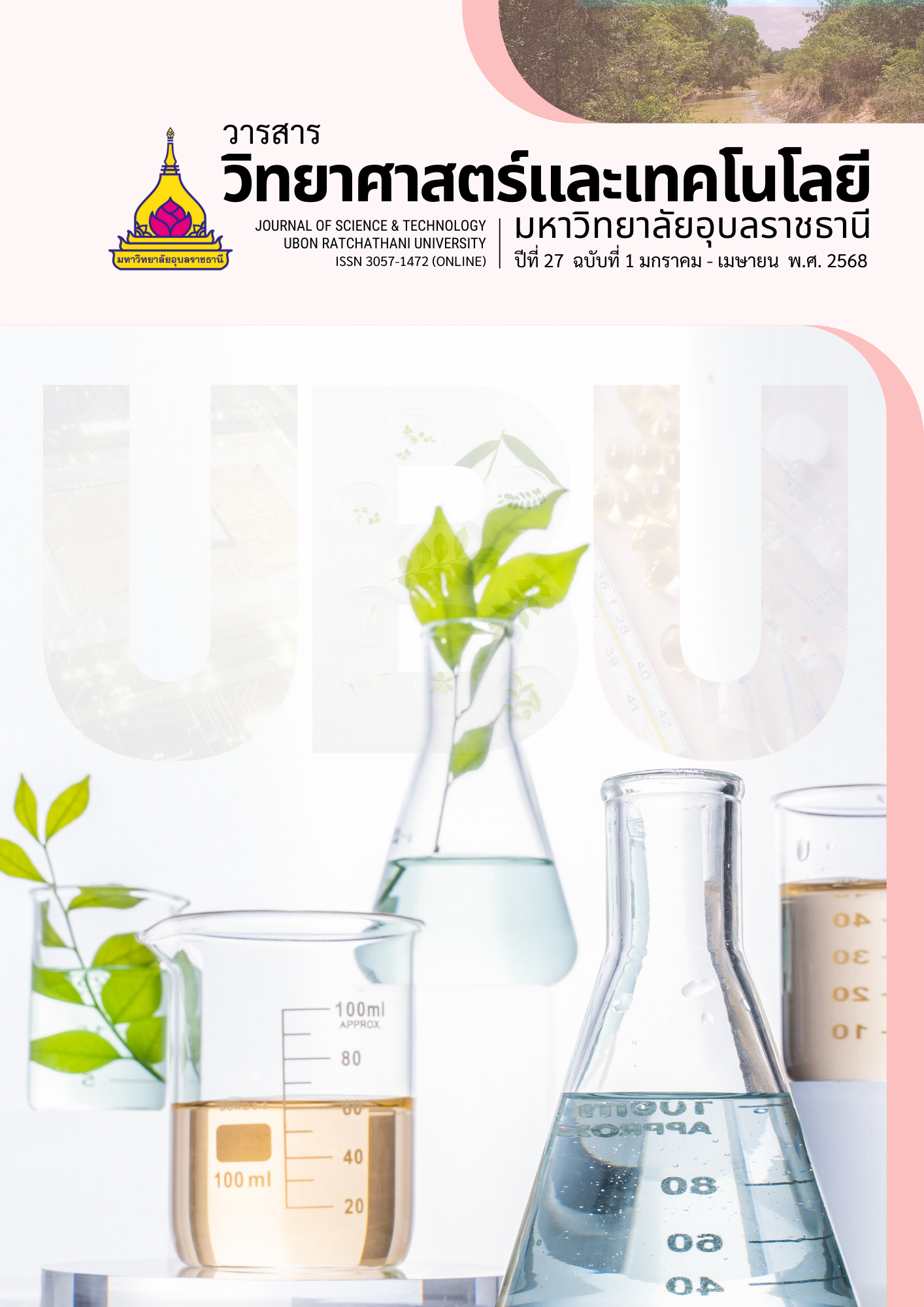การตรวจสอบสมบัติของวัสดุเหลือทิ้งในการป้องกันการพังทลายของเหมืองใต้ดินด้วยวิธีถมกลับ
Main Article Content
บทคัดย่อ
วัสดุเหลือทิ้งถูกเลือกเป็นวัสดุสำหรับการถมกลับในเหมืองใต้ดินเนื่องจากมีจุดเด่นในการป้องกันการทรุดตัว มีต้นทุนที่คุ้มค่า และมีการกำจัดหางแร่ของเหมืองผิวดินตลอดอายุการทำเหมือง สมบัติของวัสดุเหลือใช้ที่ใช้ในการถมกลับอาจมีผลอย่างมีนัยสำคัญต่อพฤติกรรมของมวลหินโดยรอบ งานวิจัยนี้มีวัตถุประสงค์เพื่อตรวจสอบสมบัติของวัสดุเหลือทิ้งในการป้องกันการพังทลายของเหมืองใต้ดินด้วยวิธีถมกลับ วัสดุเหลือใช้ที่ใช้ในการศึกษานี้ ได้แก่ เปลือกหอยนางรม หางแร่ดินขาว ฝุ่นหิน และยิปซั่มคุณภาพต่ำ ซึ่งถือว่าเป็นวัสดุไม่มีค่าและไม่เป็นอันตราย วัสดุถมกลับ 5 ชนิดที่ทำขึ้นจากการผสมวัสดุเหลือทิ้ง ซีเมนต์ น้ำ และตัวเชื่อมประสานในสัดส่วนที่ต่างกันถูกนำมาทดสอบความสามารถในการไหลโดยวิธีวัดค่าการยุบตัว และทดสอบความสามารถในการรับแรงอัดในแกนเดียว ณ 3 ช่วงเวลาการบ่มเพื่อให้วัสดุผสมแข็งตัวที่แตกต่างกันคือ 8, 16 และ 28 วัน ผลการวิจัยพบว่าวัสดุผสมทั้งหมดอยู่ในเกณฑ์มาตรฐานในการทดสอบค่าการยุบตัว ยกเว้นวัสดุผสมที่มียิปซั่มคุณภาพต่ำเป็นส่วนประกอบ นอกจากนี้แนวโน้มโดยรวมของกำลังรับแรงอัดของวัสดุผสมเพิ่มขึ้นเมื่อเวลาในการบ่มเพิ่มขึ้น วัสดุผสมที่มีหางแร่ดินขาวมีกำลังอัดสูงสุด เท่ากับ 6 MPa ที่เวลาการบ่ม 28 วัน ในขณะที่วัสดุผสมที่มี ยิปซั่มเกรดต่ำมีกำลังอัดต่ำสุด โดยมีค่าเพียงครึ่งหนึ่งของกำลังอัดของวัสดุผสมที่มีหางแร่ดินขาว การมีหางแร่ดินขาวมีผลกระทบอย่างมากต่อความแข็งแรงเนื่องจากความสามารถในการลดฟองอากาศภายในส่วนผสมปูนซีเมนต์ นอกจากนี้การเพิ่มเวลาในการแข็งตัวยังส่งผลให้ความแข็งแกร่งของวัสดุถมกลับเพิ่มขึ้นอีกด้วย
Article Details

This work is licensed under a Creative Commons Attribution-NonCommercial-NoDerivatives 4.0 International License.
บทความที่ได้รับการตีพิมพ์เป็นลิขสิทธิ์ของ วารสารวิทยาศาสตร์และเทคโนโลยี มหาวิทยาลัยอุบลราชธานี
ข้อความที่ปรากฏในบทความแต่ละเรื่องในวารสารวิชาการเล่มนี้เป็นความคิดเห็นส่วนตัวของผู้เขียนแต่ละท่านไม่เกี่ยวข้องกับมหาวิทยาลัยอุบลราชธานี และคณาจารย์ท่านอื่นๆในมหาวิทยาลัยฯ แต่อย่างใด ความรับผิดชอบองค์ประกอบทั้งหมดของบทความแต่ละเรื่องเป็นของผู้เขียนแต่ละท่าน หากมีความผิดพลาดใดๆ ผู้เขียนแต่ละท่านจะรับผิดชอบบทความของตนเองแต่ผู้เดียว
References
Gligoric, Z. and et al. 2015. Underground lead-zinc mine production planning using fuzzy stochastic inventory policy. Archives of Mining Sciences. 60(1): 73-92.
Mijalkovski, S. and et al. 2021. Methodology for underground mining method selection. Mining Science. 28: 201-216.
Mijalkovski, S. and et al. 2021. Mining method selection for underground mining with the application of VIKOR method. Underground Mining Engineering. 39: 11-22.
Ukah, B.U., Igwe, O. and Ubido, O.E. 2022. Modeling and characterization of mine pit backfilling/reclamation materials around Gyel’A’and Kantoma areas of Plateau state using integrated method. Modeling Earth Systems and Environment. 8(3): 3385-3398.
Zhang, Q. and et al. 2015. Design and application of solid, dense backfill advanced mining technology with two pre-driving entries. International Journal of Mining Science and Technology. 25(1): 127-132.
Sahu, H., Prakash, N. and Jayanthu, S. 2015. Underground mining for meeting environmental concerns–a strategic approach for sustainable mining in future. Procedia Earth and Planetary Science. 11: 232-241.
Sivakugan, N., Veenstra, R. and Naguleswaran, N. 2015. Underground mine backfilling in Australia using paste fills and hydraulic fills. International Journal of Geosynthetics and Ground Engineering. 1: 1-7.
Li, B. and et al. 2020. Surface subsidence control during deep backfill coal mining: A case study. Advances in Civil Engineering. 2020: 6876453.
Chang, Q. and et al. 2014. Implementation of paste backfill mining technology in Chinese coal mines. The Scientific World Journal. 2014: 821025.
Turuallo, G., Mallisa, H. and Rupang, N. 2020. Sustainable development: using stone dust to replace a part of sand in concrete mixture. MATEC Web of Conferences. 331: 05001.
Zhang, Q. and et al. 2012. Backfilling technology and strata behaviors in fully mechanized coal mining working face. International Journal of Mining Science and Technology. 22(2): 151-157.
Hustrulid, W.A. and Bullock, R.L. 2001. Underground Mining Methods: Engineering Fundamentals and International Case Studies. Littleton: Society for Mining, Metallurgy & Exploration.
Potvin, Y., Thomas, E. and Fourie, A. 2005. Handbook on Mine Fill. Crawley: Australian Centre for Geomechanics.
Zhang, J. and et al. 2019. Properties and application of backfill materials in coal mines in China. Minerals. 9(1): 53.
Grice, T. 1998. Underground mining with backfill. In: Proceedings of the 2nd Annual Summit-Mine Tailings Disposal System, 24-25 November 1998. Brisbane, Australia.
Belem, T. and et al. 2016. Gravity-driven 1-D consolidation of cemented paste backfill in 3-m-high columns. Innovative Infrastructure Solutions. 1: 37.
Belem, T. and Benzaazoua, M. 2008. Design and application of underground mine paste backfill technology. Geotechnical and Geological Engineering. 26: 147-174.

